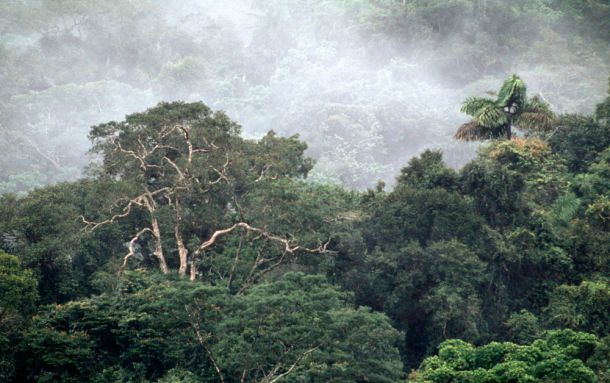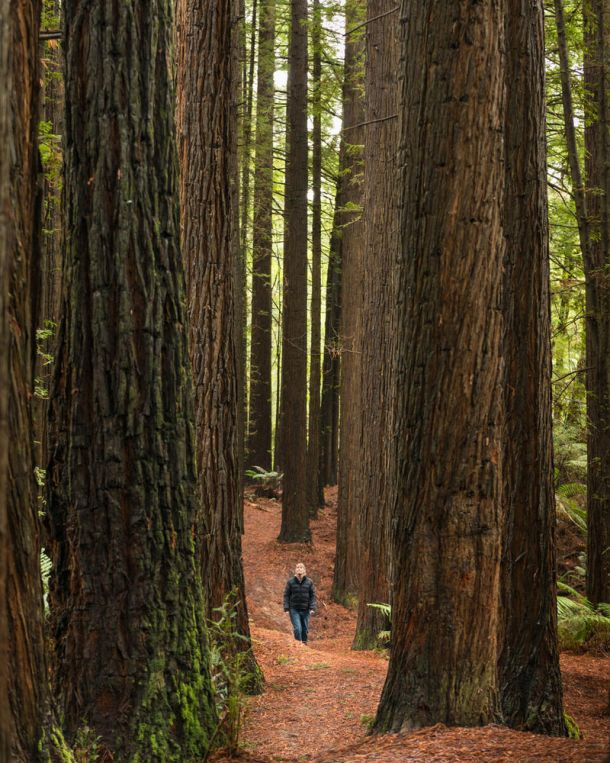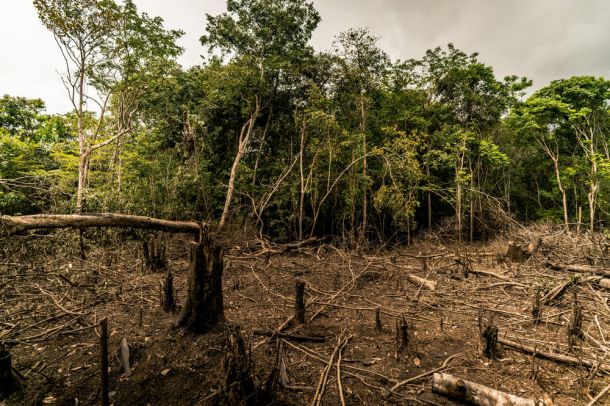This post comes to PBS Nature from World Wildlife Fund (WWF). WWF and Nature are collaborating on a series of blog posts from WWF conservation scientists that will share the stories and motivations behind cutting-edge conservation research.

Manu Biosphere Reserve. Lower mountain rainforest at 700 meters. Eastern Andean slopes, Peru. © André Bärtschi / WWF
It’s a daily dilemma—you’re getting ready for the day, uncertain if rain is in the forecast. You know what to do, you pick up your phone and check the weather app. But do you know that the question of whether it will rain, or how much it will rain, can be determined by a forest located hundreds—or even thousands—of miles away? It’s a phenomenon called atmospheric water recycling, and it’s more important than you may think.It turns out that what we learned about how plants work in elementary school really matters, on a grand scale. Plants “breathe in” carbon dioxide and take up water from their roots, and they “breathe out” oxygen and water vapor. That water vapor turns into clouds, those clouds rain down somewhere else.
While the water cycle – the process of rain, evaporation, cloud formation, and rain again – would happen even without plants, it would be limited to places where water pools and sits around long enough that it can evaporate. But plants can take up water rolling down a hillside, storing water in their leaves to release later. Essentially, plants, when you get a lot of them together, can change the way that water moves around the planet.
This process of atmospheric water recycling plays a big part in the water cycle that creates local climatic conditions. For thousands of years, we’ve derived many essential benefits from this cycle, literally building societies around the water that plants provide.
For example, rainfed agriculture—a type of farming that relies on rainfall—depends on water that plants provide through atmospheric water recycling. Rainfed agriculture accounts for almost 80 percent of agricultural land worldwide and produces 62 percent of the world’s food. Disrupting or losing this influx of water could significantly diminish the productivity of those landscapes and the livelihoods that depend on it.
The moisture that plants provide is only going to become more important for us as the planet continues to warm, because it helps buffer against some of the effects of climate change. We all know that forests help regulate the climate by storing carbon and keeping greenhouse gasses out of the atmosphere, but the water vapor that they “breathe out” is becoming increasingly critical for people all over the world.
Extreme heat waves are already leading many cities to consider the development of green spaces to help combat urban heat island effects that occur when cities replace natural landscapes with dense concentrations of surfaces that absorb and retain heat, like pavement. Likewise, we need to pay a lot more attention to the way trees and other vegetation regulate moisture, because so many places are under increasing stress from drought. We’ve always relied on the water cycle, but climate change is drawing that reliance into sharper focus.

Woman walks through Californian Red Woods (Sequoia sempervirens). Californian Redwood Forest, Great Otway National Park, Victoria, Australia. © naturepl.com / Doug Gimesy / WWF
The redwood forests near where I live in California help regulate the climate by capturing fog and keeping the area under the canopy cool and moist. Unfortunately, widespread deforestation is threatening to disrupt this cycle and the many benefits the forest ecosystems provide us. When redwood forests are clearcut for logging, the loss of those trees changes the whole microclimate, making it much hotter, drier, and inhospitable to young trees trying to grow back.
The effects of deforestation on the water cycle are happening on a global scale. Current modeling shows that deforestation could essentially turn off the tap in many places, causing major agricultural losses. For example, scientists found that deforestation in the Amazon has been associated with lower rainfall–and that reducing this deforestation would prevent agricultural losses in Brazil of up to US$ 1 billion annually.

Amazon deforestation, Colombia. © Luis Barreto / WWF-UK
Modeling like my co-authors and I did in this recent study can help us identify the areas where plants are providing the most moisture to other regions. It is especially important to identify regions that not only rely on this influx of water, but are also hotspots for biodiversity, or supply critical ecosystem benefits like clean air, nutritious food, and protection from natural disasters. When we can identify these critical natural assets and the areas that provide them with necessary moisture, we can then include them in conservation and regional water management planning. For example, we found that populated woodlands and rangelands, not remote wilderness, provide the largest volume of water to these critical areas. Our conservation strategies need to include the places where people are actively stewarding the land, because these are the most important to maintaining the key benefits we all enjoy.
So next time you get caught in the rain, think about the journey that water took to get to you and how we can protect natural water cycles. Humanity’s long-term prosperity depends on it.
